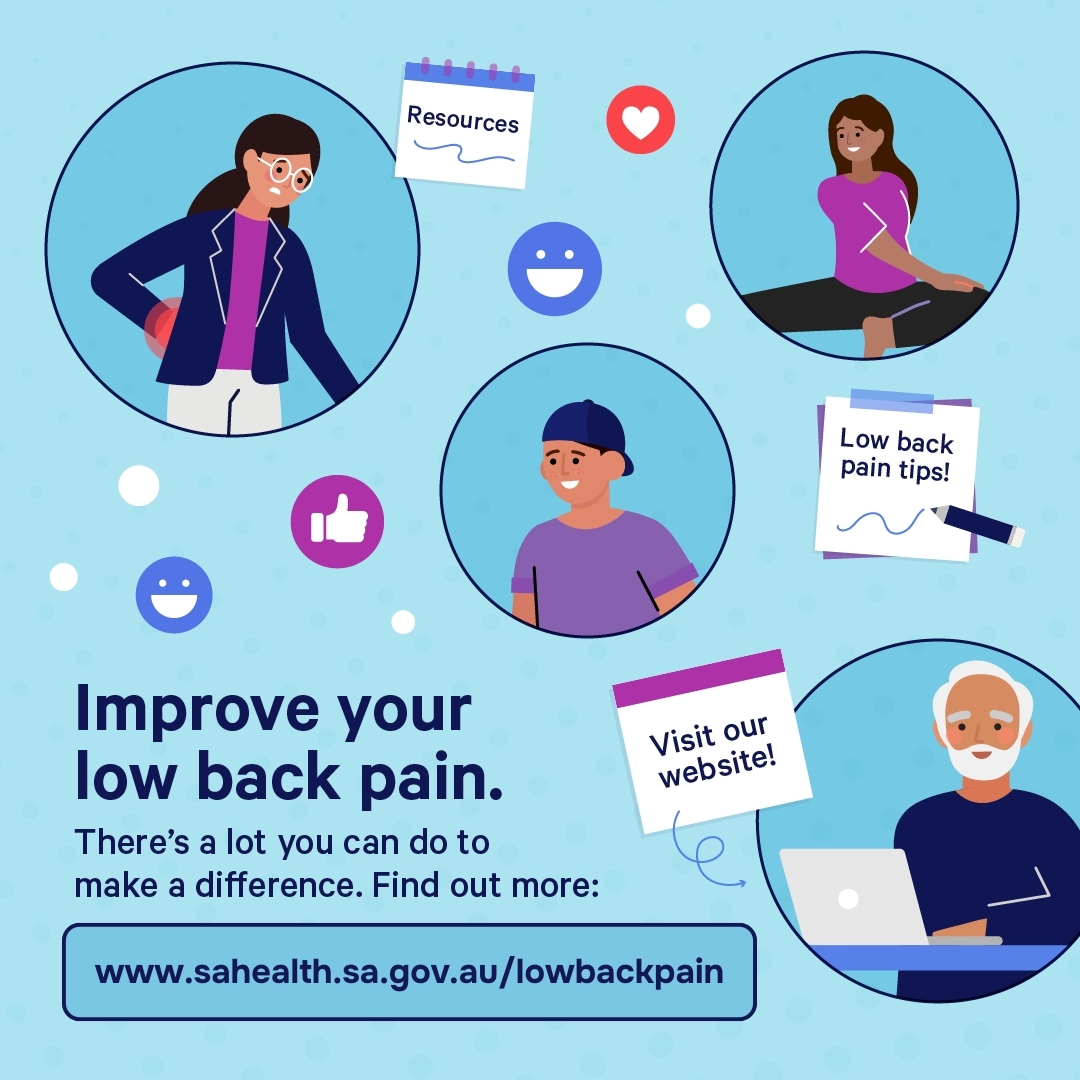New resources have been made available to help South Australians manage, treat and prevent lower back pain, after a study revealed how many people are unnecessarily going to emergency for help with the condition.

Study shows community healthcare for low back pain may be better than a trip to the emergency department
The recently released study analysed the predictors of hospitalisation for more than 11,700 South Australians presenting to hospital with non-specific lower back pain, across a five-year period.
The data was drawn from the medical records of four major metropolitan and two major regional hospitals across the state.
Key findings included:
- One in three people presenting to hospital with lower back pain arrived via ambulance
- More than half were triaged as category 4 or 5, which is less urgent care
- Fewer than one in 10 people required X‑ray or some other form of image scanning
- Fewer than two in 10 people required admission to hospital, with most being discharged back into the community the same day.
Around 70 percent of people will experience low back pain at some stage in their lives and in many cases, people attend emergency departments when they feel they can no longer manage their pain, or when treatments by community healthcare services have been ineffective or inaccessible due to location or cost.
However, although lower back pain is common, around 90 percent of people can get better on their own in just a few weeks.
Why early, community-based care matters
Professor Anne Burke, Lead of the Chronic Pain Statewide Clinical Network (SCN), says: “The data found that in an emergency department setting, people with lower back pain typically receive biomedical care that is delivered at a high cost, with a high impact to the system, but likely provides limited benefit to the patient”.
“While emergency departments will always be there to assist with severe pain or life-threatening situations, early community-based intervention is often far more effective for lower back pain,” she says.
The study was led by senior allied health staff within the Central Adelaide Local Health Network, the Commission on Excellence and Innovation in Health (CEIH) and the University of South Australia, with funding support from the Allied and Scientific Health Office.
Access the research article here
Redesigning care pathways for better outcomes
The Chronic Pain SCN is redesigning the pathways for lower back pain related care to help provide timely community-based intervention, with facilitated emergency access for those who need it. For more information, visit the optimal system of care for low back pain.
Central to this is the launch of a new website, through which South Australians can directly access targeted, evidence-based information to help manage lower back pain.
Partnering is underway with the SA Health Urgent Care Hubs at Woodville and Sefton Park to provide more options for the timely care of lower back pain outside of the emergency department, including physiotherapist digital support at home during the recovery period. A review is also being done in conjunction with the South Australian Ambulance Service of how lower back pain is managed by its responders.